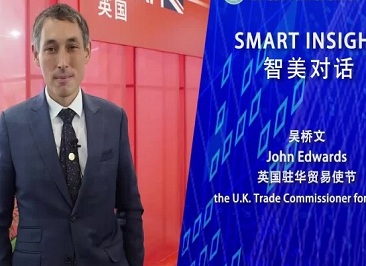..
UK and China to use graphene for rapid hepatitis testing
Updated: 2017-05-24
By Angus McNeice in London, chinadaily.com.cn
Scientists in the United Kingdom and China are teaming up to develop a quick and cheap way to test for three forms of viral hepatitis, using sensors made of graphene, a highly conductive and incredibly strong two-dimensional material made of carbon.
Hepatitis is a major global public health challenge – around 400 million people carry the disease, which caused 1.34 million deaths in 2015, according to the World Health Organization. Hepatitis B is present in China, where 90 million people are infected.
With the help of partners in the UK and researchers at the University of Chongqing in Southwest China, UK-based diagnostics device company BIOVICI will lead a two-year project to develop a graphene sensor that will detect hepatitis A, B, and C antibodies in saliva.
Paul Morgan, chief executive at BIOVICI, said the test will bring "major benefits" to the global fight against the spread of the infectious disease.
"Many people associate hepatitis as a problem that happens elsewhere and not in their home country," Morgan said. "However, hepatitis is a global epidemic, which is rapidly affecting parts of the UK, throughout Europe, and the United States."
Blood tests for hepatitis currently take up to seven days to deliver results, during which time a patient could spread the infection. Today's tests are also expensive and require trained medical personnel to carry out invasive procedures.
Researchers on the new project say the tests using graphene technology will be non-invasive and deliver fast results for as little as 1 pound ($1.30) when they are eventually mass-produced.
The UK's National Physical Laboratory will conduct electrical testing for the project, and the University of Swansea will head chemical testing. The two Chinese players, Chongqing University and industry partner CTN, are responsible for graphene device production and manufacturing.
Olga Kazakova, principle research scientist in advanced materials at the National Physical Laboratory, said: "Graphene's unique characteristics mean it has great potential to be used in a variety of sensing applications. Through this research, we are working to develop international standards for grapheme, which will help to unlock new applications for the incredible material."
At just one atom thick, graphene is among the world's thinnest materials, and has several useful properties. It is flexible and nearly transparent, it efficiently conducts heat and electricity, and it is 200 times as strong as the strongest steel. Graphene was first observed through an electron microscope in 1962, though research into its application in a number of industries only began in earnest in 2004, following its isolation in a lab at the University of Manchester.
Research is underway into the use of graphene in a range of medical devices, including sensors that monitor breathing and heart rate, and ones that diagnose diseases, such as diabetes and asthma, through testing for molecular biomarkers.
Video

UK trade commissioner for China praised Chongqing as a burgeoning center in intelligent manufacturing.





